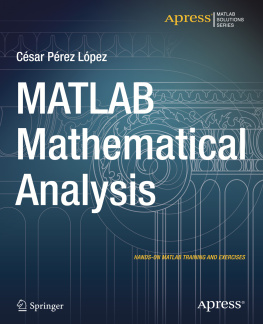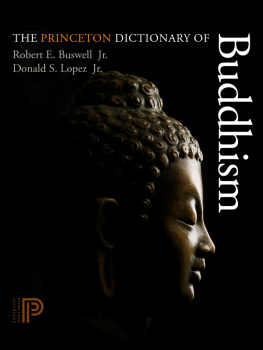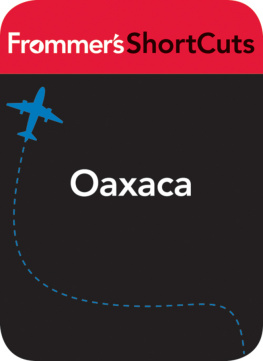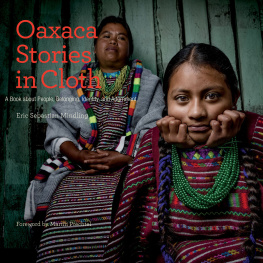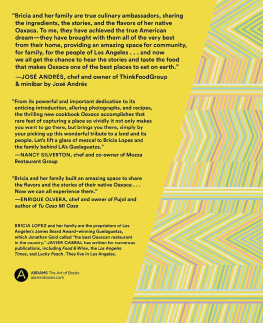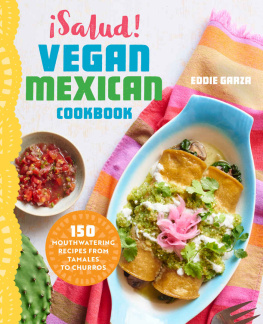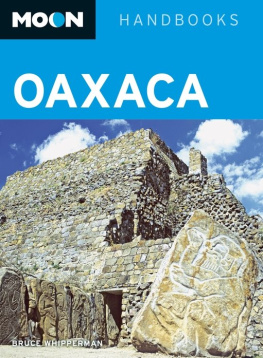Contents
Landmarks
Page List
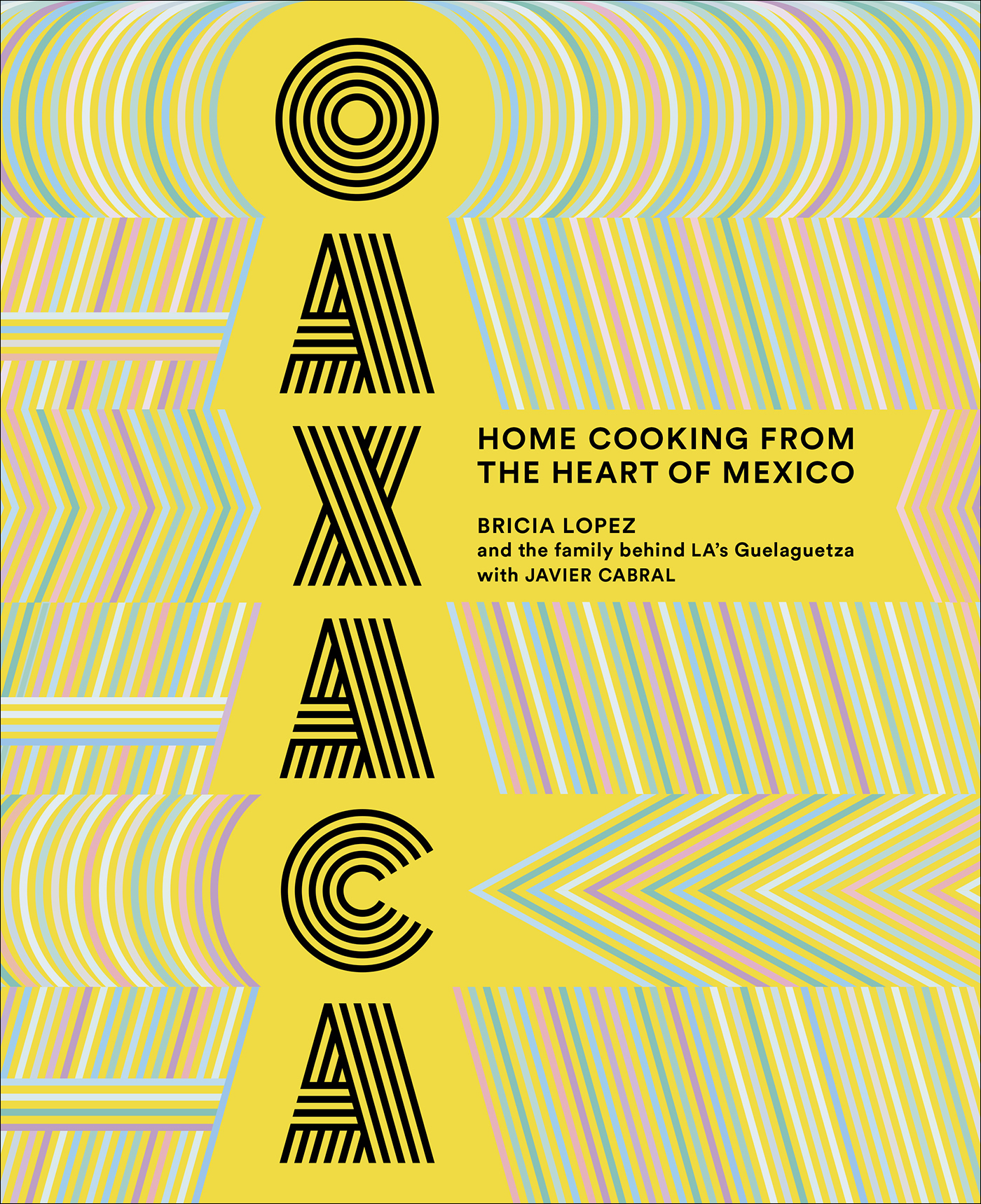

This book is dedicated to the millions of immigrants who every day fearlessly cross borders for a better life. May you continue to represent your culture and fight for your dreams. Dont ever allow anyone to tell you that your dreams are too big or too crazy. To all of our Oaxaqueos, Poblanos, Guerrerenses, and the rest of the Mexicanos who continue to be the backbone of the food industry in America, may your stories be heard. Dont be afraid to be you because that is your tradition. Our culture and our passion for a better life is what makes us stronger and more united than ever.
To Jonathan Gold, the man who changed our familys life. Thank you for championing food diversity in Los Angeles and in this country through your writing. Your spirit will forever be alive in our hearts. Los Angeles misses you.
And lastly, to our parents, Fernando Lopez and Maria de Jesus Monterrubio. Thank you for your bravery, your resilience, and your unconditional love as parents. Thank you for taking the leap and leaving everything you knew behind to provide your children with a better life. We hope to one day be as brave as you.

The Oaxacan Essentials:
Techniques and Ingredients
CHAPTER 1
The Staples of Oaxaca
CHAPTER 2
Breakfast
CHAPTER 3
Antojitos Oaxaqueos
(Tamales and Finger Foods)
CHAPTER 4
Sopas y Caldos
(Soups)
CHAPTER 5
Our Moles
CHAPTER 6
Family Meals
CHAPTER 7
Sweets
CHAPTER 8
Salsas
CHAPTER 9
Mezcal Cocktails, Aguas Frescas, and Our Michelada

INTRO
At the southeastern reaches of Mexico, nestled alongside the Pacific Coast one state away from Central America, lies a land of rugged mountains, narrow canyons, arid flatlands, lush valleys, and a blue sky that goes on as far as the eye can see. It is a land of ancient villages and the home of Zapotecos, Mixtecos, Mazatecos, Mixes, and many other proud indigenous communities. Many know it as the land of the seven moles, and most recently, as the birthplace of mezcal. But believe me when I tell you: Oaxaca is so much more than that. The corn, the chiles, the herbs and spices, and the chocolate that form the foundation of the food here establish this beautiful state as the culinary heart and soul of the Mexican nation. And for those of you who are wondering, its name is pronounced wah-ha-ka. It is derived from the word guaje, a pre-Hispanic vegetable that grew abundantly in the region.
I grew up eating tortillas made from masa nixtamalized by my hardworking mother the previous night and ground fresh almost every morning. Our beans were cooked with wild herbs plucked fresh from the soil, and we ate every combination of chiles, tomatoes, tomatillos, onion, and garlic that you can imagine. I come from a long lineage of Oaxacan mezcaleroscraftsmen and cooks who specialize in making our famous liquor, now beloved around the world, from roasted agaves. These deep Oaxacan flavors are ingrained deep inside me and have stayed with me throughout my life. These are the flavors my family has always strived to offer our guests at our restaurant, Guelaguetza, in Koreatown, Los Angeles. And, now, in this book.
We are sparing absolutely no secrets, and each recipe has been carefully selected not only to be inviting enough to cook for your loved ones at home but also to illustrate the story of my family in their journey from Oaxaca to Los Angeles.
My father, Fernando Lopez, founded Guelaguetza in Los Angeles in 1994. It has since become the center of life for the Oaxacan community in this city. The late Pulitzer Prizewinning Los Angeles Times food critic Jonathan Gold called it the best Oaxacan restaurant in the United States, and it was named Americas Classic by the James Beard Foundation in 2015.
Oaxaca leads all other Mexican states when it comes to the preservation of indigenous flavors, ingredients, and techniques through the centuries. Because of its rugged terrain, many of the indigenous communities were never conquered by the Spanish conquistadors. Some, like the Mixes, earned the nickname los jams conquistados, which translates to the [ones who were] never conquered. Monte Alban (one of Oaxacas main archaeological sites) was the pinnacle of Mesoamerican society, and when it comes to biodiversity, tradition, and scenery, Oaxaca is one of the most stunning destinations in Mexico.
I am in love with everything Oaxaca, and I am confident that once you begin to cook from this book, taste it all, and read everything else I have to say about my hometown, you will be, too.
GUELAGUETZA AND ITS MEANINGS
In Zapotecothe indigenous dialect that is spoken throughout Oaxacaguelaguetza is translated to mean reciprocity or to give and receive.
In everyday life, the word guelaguetza is used to describe the act of giving to one another in times of celebration. During baptisms, quinceaeras (a traditional Mexican-style birthday celebration for fifteen-year-old girls that signifies their growth into a young woman), graduations, weddings, anniversaries, and even death, families always come together to help each other out with both lavish and small gifts. This word embodies one of the core values of Oaxacan culture: to always share what you have with others no matter how much or little you may have. As a receiver, the other side of this tradition is to receive everything with an open heart, selflessly, because eventually you, the receiver, will become the giver and so the tradition continues. It is a never-ending cycle of giving that transcends life spans and generations.


The guelaguetza tradition has been practiced in the villages of Oaxaca since before the arrival of the Spanish in the fifteenth century. To this day, many households in Oaxaca still have a guelaguetza notebook that gets passed down from generation to generation. Every single gift exchanged between families is documented in this notebook, so that future generations of the family can look back and reflect on their own history of giving and receiving. It is a sacred exchange between families that outlives individual people and forms the foundation of the deeply generous community that is Oaxaca. I think this is one of the major reasons Oaxaqueos are regarded as some of the friendliest and warmest people in Mexico. Guelaguetza is an ongoing ritual of kindness that is embedded in our DNA.
Not too long ago my mom told me about a person who lived in her hometown who knocked on her door to ask about a guelaguetza my late grandma had pending. They brought their notebook along and in fact my grandma had received two sacks of beans from them many years ago, long before she passed away. It was now my moms turn to return that favor in my grandmothers name. These occurrences are not uncommon and can go unclaimed or be reclaimed generations down the line. The gifts can range from a couple of freshly slaughtered turkeys, ready to be served with




